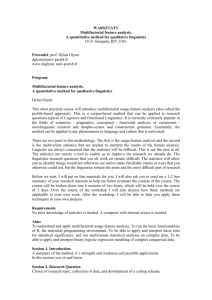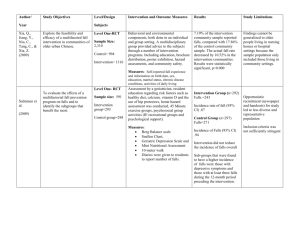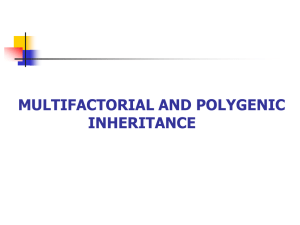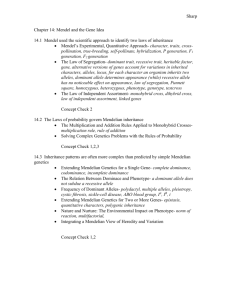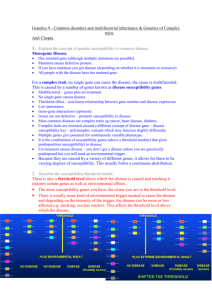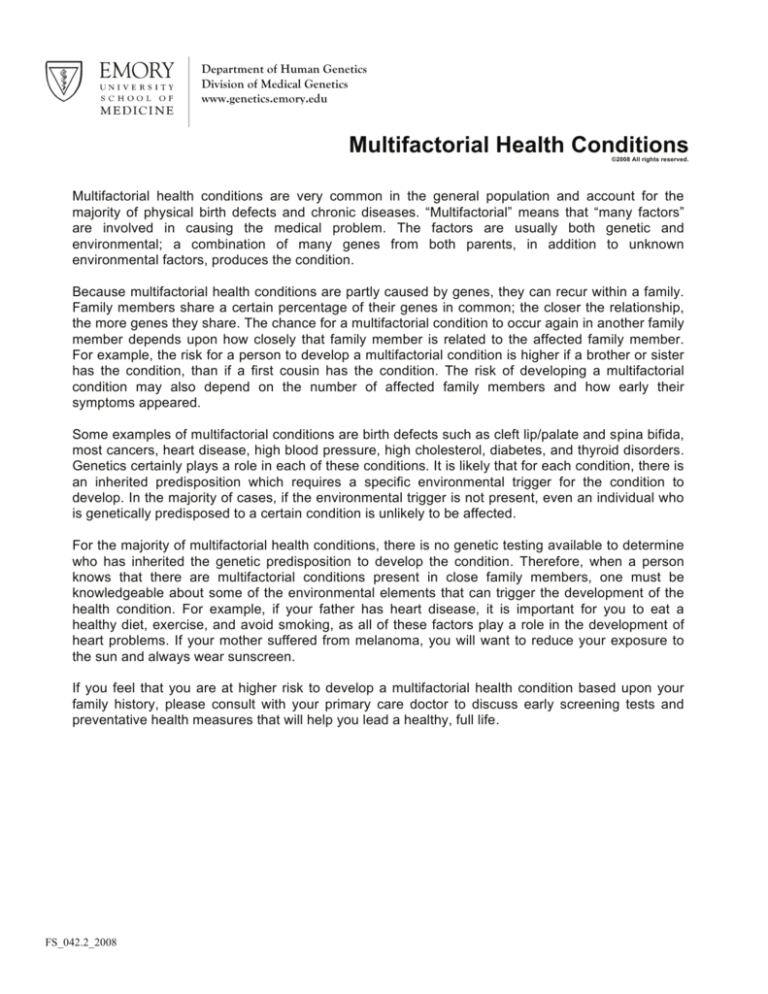
Department of Human Genetics
Division of Medical Genetics
www.genetics.emory.edu
Multifactorial Health Conditions
©2008 All rights reserved.
Multifactorial health conditions are very common in the general population and account for the
majority of physical birth defects and chronic diseases. “Multifactorial” means that “many factors”
are involved in causing the medical problem. The factors are usually both genetic and
environmental; a combination of many genes from both parents, in addition to unknown
environmental factors, produces the condition.
Because multifactorial health conditions are partly caused by genes, they can recur within a family.
Family members share a certain percentage of their genes in common; the closer the relationship,
the more genes they share. The chance for a multifactorial condition to occur again in another family
member depends upon how closely that family member is related to the affected family member.
For example, the risk for a person to develop a multifactorial condition is higher if a brother or sister
has the condition, than if a first cousin has the condition. The risk of developing a multifactorial
condition may also depend on the number of affected family members and how early their
symptoms appeared.
Some examples of multifactorial conditions are birth defects such as cleft lip/palate and spina bifida,
most cancers, heart disease, high blood pressure, high cholesterol, diabetes, and thyroid disorders.
Genetics certainly plays a role in each of these conditions. It is likely that for each condition, there is
an inherited predisposition which requires a specific environmental trigger for the condition to
develop. In the majority of cases, if the environmental trigger is not present, even an individual who
is genetically predisposed to a certain condition is unlikely to be affected.
For the majority of multifactorial health conditions, there is no genetic testing available to determine
who has inherited the genetic predisposition to develop the condition. Therefore, when a person
knows that there are multifactorial conditions present in close family members, one must be
knowledgeable about some of the environmental elements that can trigger the development of the
health condition. For example, if your father has heart disease, it is important for you to eat a
healthy diet, exercise, and avoid smoking, as all of these factors play a role in the development of
heart problems. If your mother suffered from melanoma, you will want to reduce your exposure to
the sun and always wear sunscreen.
If you feel that you are at higher risk to develop a multifactorial health condition based upon your
family history, please consult with your primary care doctor to discuss early screening tests and
preventative health measures that will help you lead a healthy, full life.
FS_042.2_2008


